Idea by
Tumpa Husna Yasmin Fellows
Mannan Foundation Trust & Our Building Design
http://www.mannanfoundationtrust.org
Call for ideas 2019
Rajapur community building for women’s literacy and healthcare centre
Rajapur community building for women’s literacy and healthcare centre
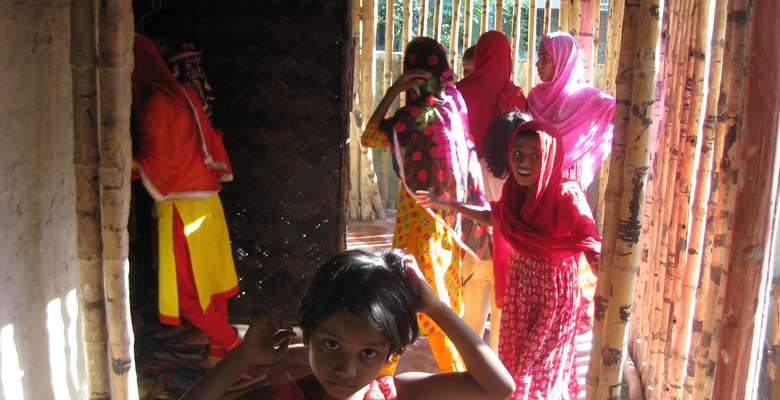
- New alliances
Community participation in the Rajapur project enabled us to discover how the community design and build support systems to adapt to the changing monsoon and climate.
The inter-cultural team of London-based professional volunteers; fundraised and worked with the local communities in Rajapur. To ensure the transfer of distribution of power and to achieve community-ownership, local community was involved from the outset.
The architectural drawings were restricting participation, so hand sketches and models were used for communication. “Learning Through Drawing” workshops, enabled the village children to draw and the adults moved around the site, performing their ideas. It was co-designed in response to the area’s challenging climate; including annual flooding and extreme temperature; utilising local techniques, skills and materials to be resilient. The building sits on stilts above a pond, so it benefits from evaporative cooling through its special perforated bamboo and earth walls.
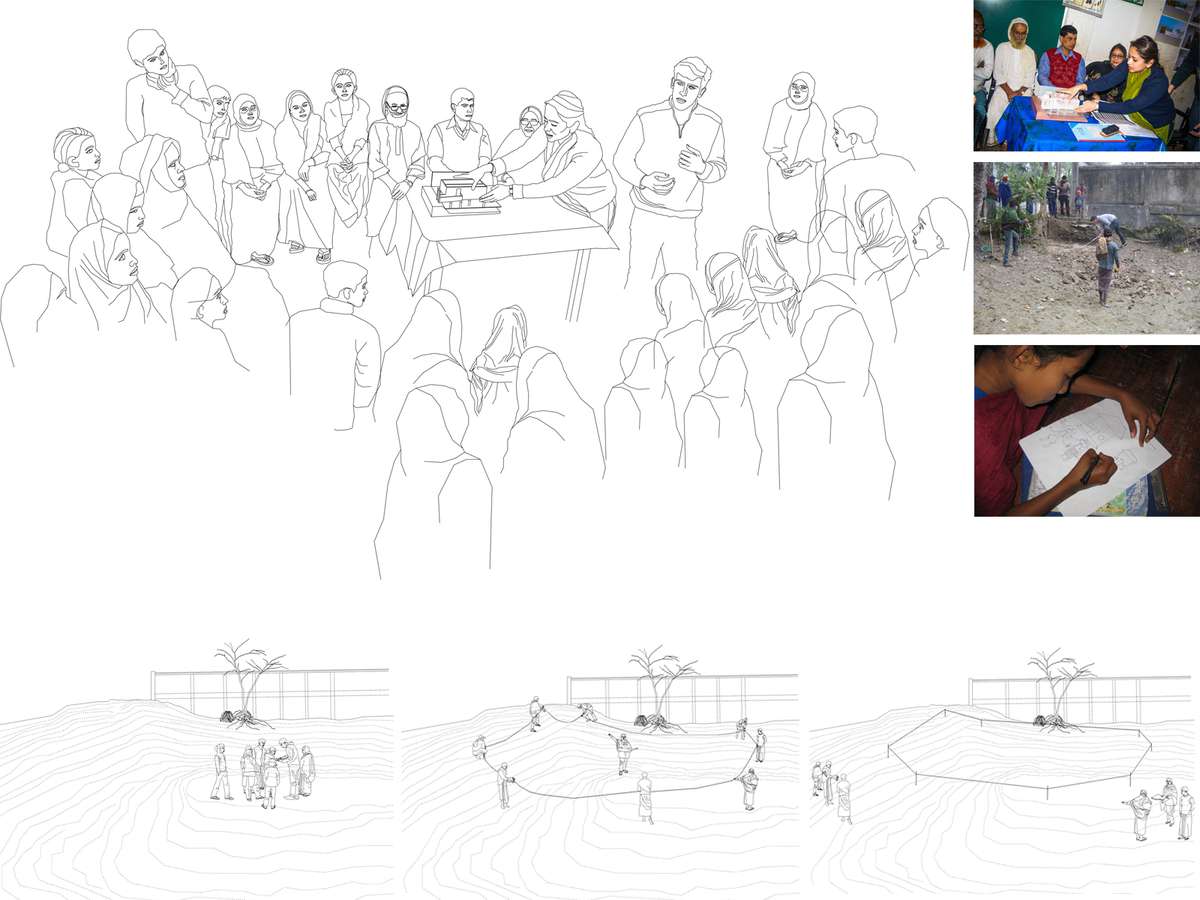
We hosted several community drawing workshops called “Learning Through Drawing”, where the village children drew the design and the adults moved around the site, discussing while performing on site to communicate their ideas. Photo credit: Mannan Foundation Trust

Women in the village had the expertise to build with mud, therefore they were employed to make the rammed earth bricks, whilst local labour installed them on site in order to overcome cultural barriers to women working with men in public, on site. Photo credit: Mannan Foundation Trust
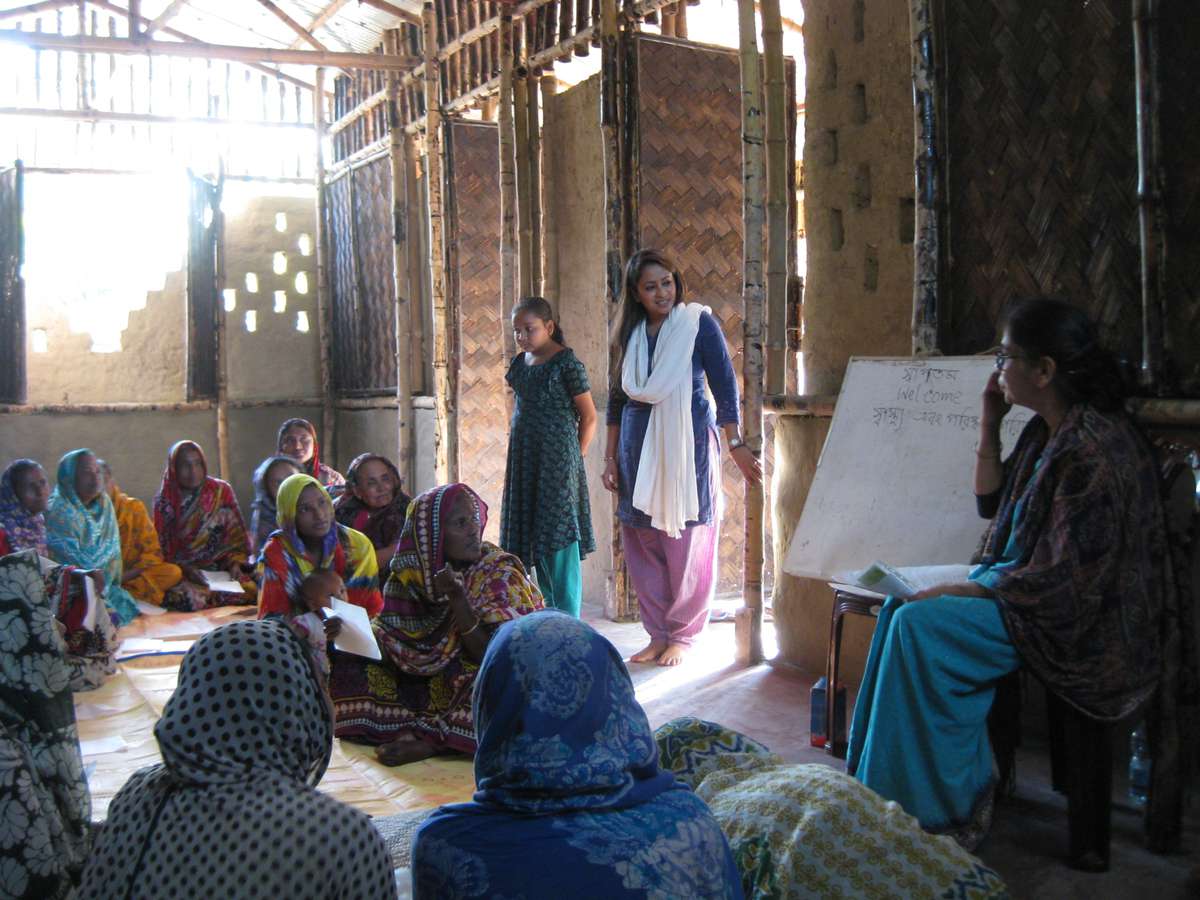
Local materials utilised are intended to be resilient to the area’s challenging climate; the high thermal mass of the rammed earth walls keep the rooms cool and create comfort, during the extreme temperatures that can reach 45 degrees or above. Photo credit: Mannan Foundation Trust
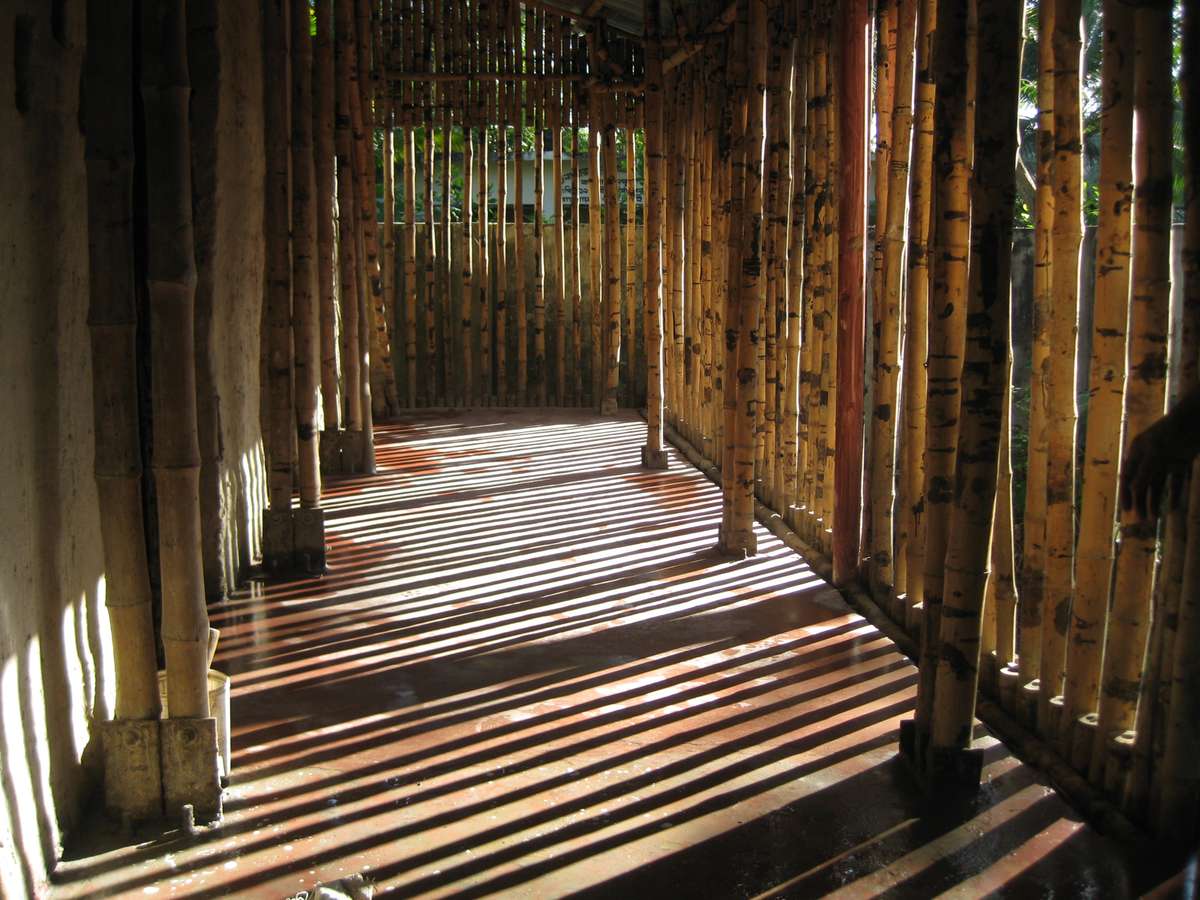
The participation of the community members (in the construction workshops) enabled the utilisation of local expertise and skills on the local materials such as building with home-grown bamboo and rammed earth. Perforated bamboo walls play a vital role in sculpting the natural daylight and provide evaporative cooling to moderate the internal temperature at the Rajapur Centre. Photo credit: Mannan Foundation Trust

The design strategy we adopted to build the Rajapur Centre is constructed from rammed earth and bamboo, the building sits on (concrete) stilts above a fish farming pond, so it benefits from evaporative cooling through its special perforated bamboo and earth walls. Photo credit: Mannan Foundation Trust
Rajapur community building for women’s literacy and healthcare centre
Rajapur community building for women’s literacy and healthcare centre

- New alliances
Community participation in the Rajapur project enabled us to discover how the community design and build support systems to adapt to the changing monsoon and climate.
The inter-cultural team of London-based professional volunteers; fundraised and worked with the local communities in Rajapur. To ensure the transfer of distribution of power and to achieve community-ownership, local community was involved from the outset.
The architectural drawings were restricting participation, so hand sketches and models were used for communication. “Learning Through Drawing” workshops, enabled the village children to draw and the adults moved around the site, performing their ideas. It was co-designed in response to the area’s challenging climate; including annual flooding and extreme temperature; utilising local techniques, skills and materials to be resilient. The building sits on stilts above a pond, so it benefits from evaporative cooling through its special perforated bamboo and earth walls.
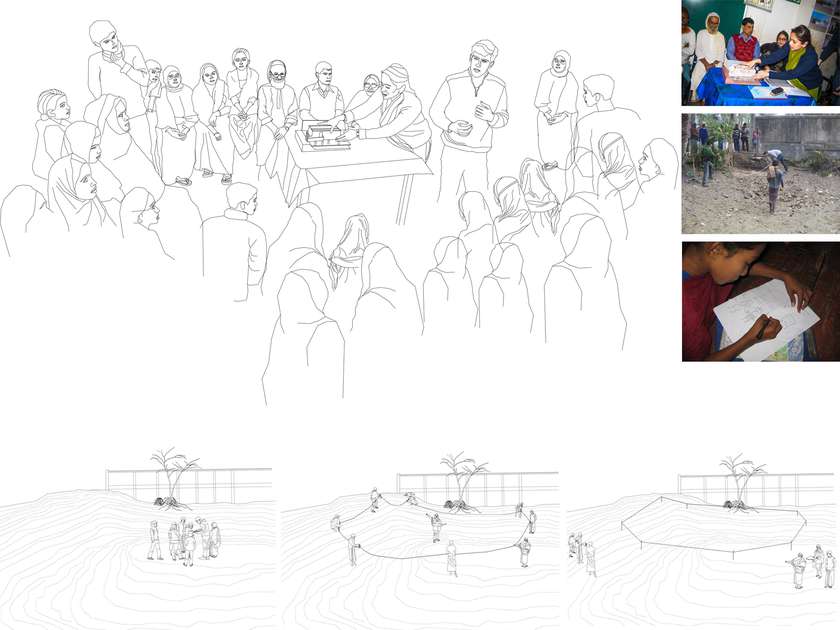
We hosted several community drawing workshops called “Learning Through Drawing”, where the village children drew the design and the adults moved around the site, discussing while performing on site to communicate their ideas. Photo credit: Mannan Foundation Trust
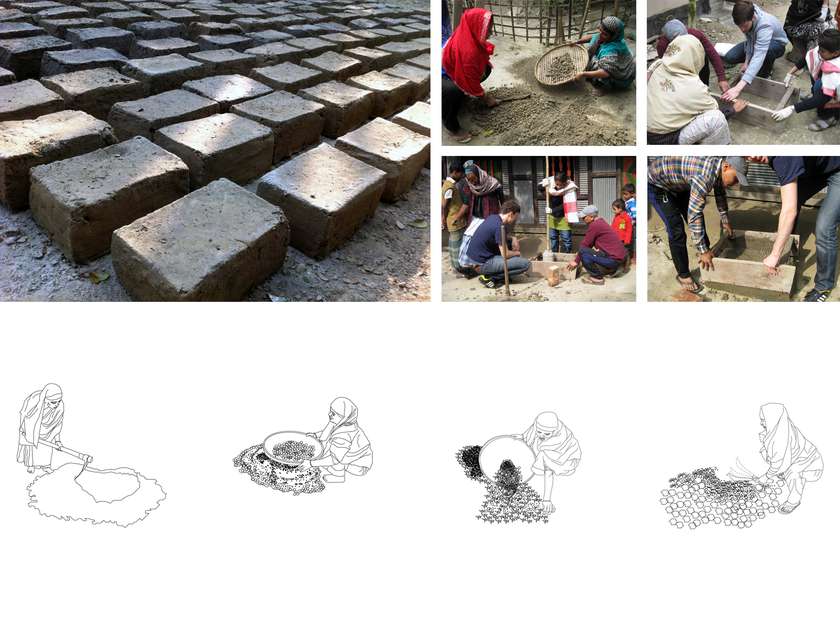
Women in the village had the expertise to build with mud, therefore they were employed to make the rammed earth bricks, whilst local labour installed them on site in order to overcome cultural barriers to women working with men in public, on site. Photo credit: Mannan Foundation Trust
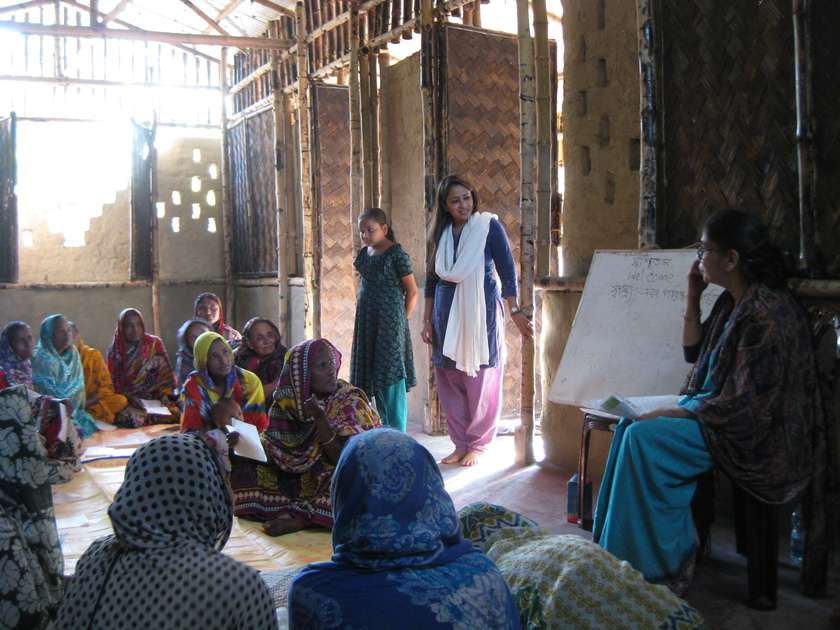
Local materials utilised are intended to be resilient to the area’s challenging climate; the high thermal mass of the rammed earth walls keep the rooms cool and create comfort, during the extreme temperatures that can reach 45 degrees or above. Photo credit: Mannan Foundation Trust

The participation of the community members (in the construction workshops) enabled the utilisation of local expertise and skills on the local materials such as building with home-grown bamboo and rammed earth. Perforated bamboo walls play a vital role in sculpting the natural daylight and provide evaporative cooling to moderate the internal temperature at the Rajapur Centre. Photo credit: Mannan Foundation Trust
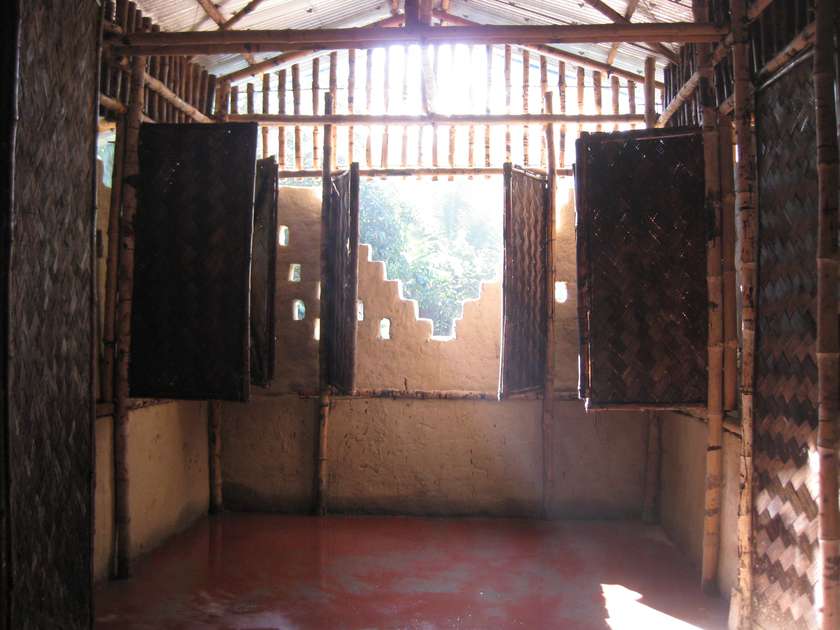
The design strategy we adopted to build the Rajapur Centre is constructed from rammed earth and bamboo, the building sits on (concrete) stilts above a fish farming pond, so it benefits from evaporative cooling through its special perforated bamboo and earth walls. Photo credit: Mannan Foundation Trust